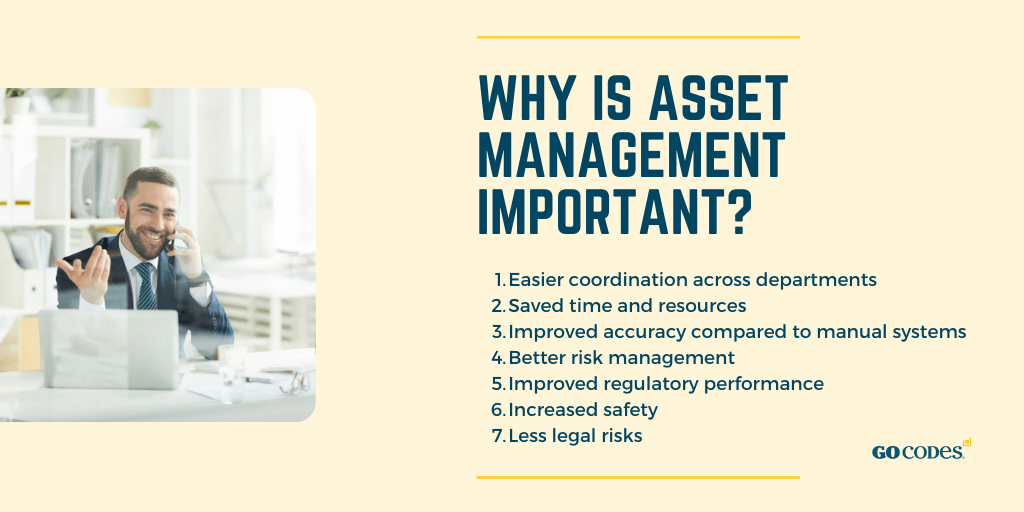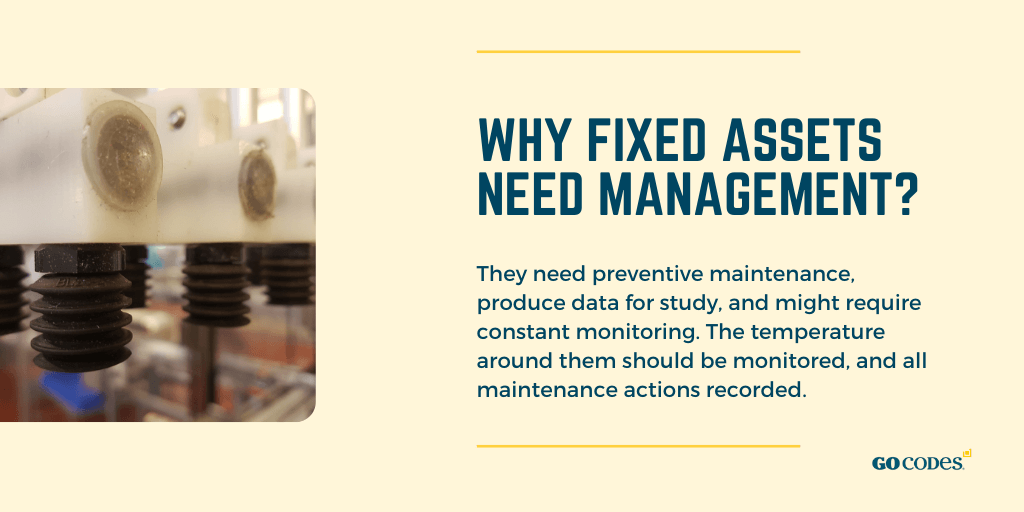Managing your organization’s assets, no matter what type, unlocks efficiency and greater accountability. Learning about various types of asset management will help you gather information about the best system for your business and reach a well-versed decision.
Finding a good fit for the nature of your company, as well as one which serves your employees and clients well, is the first step in implementing a new and better way of working with your assets.
This post is most beneficial for supply chain decision makers, COOs of companies with physical assets of any kind, especially those involved in fieldwork, as well as organizations responsible for many types of equipment.
Since asset management is as diverse as the kinds of equipment an employer might use, it’s important to become familiar with ways in which it can impact your organization.
In this article...
What Is Asset Management?
The term asset management is a broad one. It can be generally used to discuss forms of wealth, but for our purposes, we’ll define asset management as a system of managing, organizing, and maximizing value from objects or holdings.
Asset management takes place across departments and levels of company involvement: from COOs and managers, to accountants and engineers, all the way to IT professionals and even equipment operators.
Furthermore, even third-party contractors and clients can play a part in successful asset management.
When properly deployed, asset management helps stakeholders, decision makers, and employees predict and oversee the life cycle of an asset.
It involves, for instance:
- overseeing assets,
- making purchasing decisions,
- organizing maintenance schedules,
- conducting the regular scanning of items,
- gathering and overseeing the data generated by the above actions,
- managing inventory.
It stands to reason that the more accurate the data gathered by an asset management system and its software, the better informed these actions and judgments are.
Why Is Asset Management Important?
Companies that invest in asset management see many benefits, and not all of them are economic.
A well-chosen asset management system creates a steady data stream through asset tracking in real time, encourages accountability, and keeps planning and equipment maintenance on track.
Tracking and managing assets digitally helps avoid certain pain points in outdated tracking systems, such as relying on inaccurate data with no way to know where assets are or how they are performing.
With a centralized location and easily trackable assets, the chance of misunderstandings stemming from differences in departments or branches diminishes, as decision makers are able to coordinate across time zones and different international locations.

This automatically saves time and resources.
Moreover, capital costs are slashed and money is saved on maintenance due to improved scheduling and automatic alerts. In fact, overall operating costs go down, whereas planning becomes more efficient.
Since digitalized asset management improves accuracy compared to manual data entry, implementing such a system optimizes item tracking. Ghost asset counts are removed from inventory listings, while theft and loss decrease.
Additionally, such a system provides for the implementation of a risk management plan and improves regulatory performance.
Accuracy in amortization rates is also enhanced.
The potential environmental impact of different assets is also better managed, while the health impacts of operating assets are improved.
Improving safety also minimizes legal risks and, as a result, company reputation is better protected.
How Does Asset Management Work?
Asset management is a multi-step process that is largely automatized once the initial stages are completed. No matter the type, its many advantages will quickly become evident.
Even the act of preparing for asset management yields benefits.
For example, while tagging items or preparing for the same-item organization, employees might discover unnecessary duplicates or stock which was previously thought lost.
Once established, asset management is largely a matter of maintaining the system and studying the data it yields.
Setting up an asset management system includes:
- Gathering information on types of asset management systems
- Observing the movement and needs of assets, noting what type of asset management system is best
- Deciding on the best asset management software fit
- Organizing assets for inventory and tagging
- Tagging assets with QR codes
- Scanning tags to place in the system
- Tracking assets with scans
- Maintaining the system through tracking and occasional check-ins with employees and decision makers
- Studying data the tracking provides
- Conducting maintenance according to preventive maintenance prescriptions, as well as emergency need
- Predicting the life cycle of assets
- Dispose of, donate, recycle, or sell asset at the end of its life cycle
QR codes are integral to beneficial asset management. They enable fast tracking with intuitive smartphone apps, which is a vast improvement over inaccurate and clumsy spreadsheets or manual records.
Using QR codes as part of an asset management system requires no new hardware, provides for easy training, and allows for fast, simple, and comprehensive data upload across systemwide informational shifts.
Different Types of Asset Management
To deal with your assets in the most efficient way, it is important to find the type of management that best suits your company’s needs.
For example, a company with largely in-house inventory that doesn’t leave the premise will probably have little need for an asset management system that includes GPS tracking.
On the other hand, for an international corporation, there will be many advantages to seeing where an item is in the supply chain.
Understanding different types of asset management is a major aspect of choosing a workable system. Here are various kinds, along with what they entail.
1) Digital Asset Management (DAM)
Digital asset management is a rapidly evolving field. It involves the efficient organization of digital media and content, as well as processing and storing it.
This continually ongoing method includes metadata.
“It’s important to think of digital asset management not only as a platform, but as a process… a DAM system is like an enhanced digital media library that streamlines everything.”
One of the most important aspects of digital media is security.
By controlling access to such items as intellectual property rights, building plans, and meeting recordings, stakeholders avoid the cost of maintaining multiple copies of these items in storage locations.
More importantly, they can rest assured that they are better protected from natural disaster, fire, and water damage.
Providing for a strong digital asset management system allows for:
- Instantaneous distribution of digital items and information
- Accountability in accessing the digital assets
- Opportunities for digital asset repurposing
- Fast and easy searching of digital items without specialized training
- Efficient brand consistency
- Valuable information on which clients access digital items—who, what, and when, as well as for how long, all of which is hugely useful in developing marketing strategies
Even companies that do not sell digital items can profit from using digital asset management.
Keeping files, timecards, instruction manuals, and operating instructions in an easy-to-use system with as-needed access is now the norm.
2) Fixed Asset Management
The management of fixed assets is a matter of consideration for every company, even if it is supply chain-focused.
Fixed assets are all items used by an organization to generate income; in general, they remain in the position in which they have been installed. Examples of fixed assets include plumbing installations, appliances, and in-place machinery.
These are also referred to as “property, plant, and equipment,” or PP&E.
They are usually major investments which serve the company for several years and depreciate over the space of their life cycle.
If an asset is fixed, why does it need management?
Such assets still require tracking. They need preventive maintenance, produce data for study, and might require constant monitoring.
Fixed asset management can provide all this and more.

For example, a conveyor belt does not relocate within a company, or exit the building and circulate amongst workers and clients.
However, for optimal performance, the temperature around it should be monitored, its production rate studied, and all maintenance actions on it recorded.
By adding fixed assets to an asset management system or implementing one which is focused solely on PP&E, a company can get:
- Information on who was using the asset and when, as well as which actions were performed
- Lower maintenance costs
- Real-time data streams on fixed assets in various locations
- Pre-scheduled preventive maintenance
- A record of assets which have been retired, lost, stolen, or recycled
Expanding one’s thinking to include fixed assets to what a company can lean upon to optimize profit is a wise strategy that easily becomes part of its culture over time.
3) IT Asset Management (ITAM)
IT asset management encompasses management of hardware and software.
It includes company-owned devices such as computers, routers, and similar IT equipment, but also intangible assets such as software subscriptions (SaaS), licenses, patents, and network infrastructure.
IT asset management helps provide security, save time and money, and build a strong technological footing for the future. It involves a system for storing, retrieving, organizing, and sharing information, both online as well as in-house.
Digital files are stored on hard drives and backed up in the cloud; assets are easily tracked and updated. Time is saved with an intuitive search and storage system.
Messaging and video meetings are securely conducted.
Duplicate files are found and deleted, viruses eliminated and changes instantly made across all platforms.
Since every modern organization requires some form of instant communication and file sharing, IT management is useful no matter what kind of company or service provider is under discussion.
4) Enterprise Asset Management
Enterprise asset management is a fast-growing aspect. It organizes, integrates, and optimizes any physical asset or infrastructure a company owns through their entire lifecycle. This involves documentation, productivity, inventory records, and the condition of facilities.
Enterprise asset management is also known as EAM.
EAM is different from the other forms of asset management discussed here in that it is a holistic approach to organization and tracking.
When considering an enterprise asset system, be sure to look for a system which includes the following:
- The ability to create customized and accurate reports
- Instantaneous calculation and email generation
- Data visualization
- Tailored formulas, charts, and productivity goals
EAM software can organize warranties and regulation compliance, as well as work orders and follow up notifications.
5) Financial Asset Management
Financial asset management refers to a more traditional understanding of managing assets. It encompasses investments, real estate holdings, brokerage services, and all the intangible investments of an organization.
In this category, asset management involves tracking market rates, tax responsibilities, and other financial liabilities, such as debts, and compiling interest.
The goal of financial asset management is to maximize profits over time while mitigating risk.
6) Infrastructure Asset Management
Infrastructure is what makes cities and any area of development habitable. It includes mass transportation options, roads, water access, electricity, and civil engineering.
Infrastructure asset management, then, is the blanket term for the strategies involved in maintaining, updating, and potentially removing these vital utilities.
Often, infrastructure asset management focuses on the end of the life cycle of an item, and the most efficient, economical, safest, and environmentally responsible ways in which to replace it.
Many organizations must work with civil and national governing entities in order to operate efficiently. Understanding infrastructure asset management, then, is an important part of working well with one’s own assets and capabilities.
Conclusion
Now you know what types of asset management exist. For businesses that care for their assets, doing so in a responsible and integrated fashion is key for optimized growth and profitability.
Proper training, operation of, and eventual disposal of all assets require planning and an intricate understanding of their place in the company.
In addition, the ability to read data in real time and study it in depth later and in context with other information is vital for understanding how to cut costs and increase productivity.
By mitigating risks, increasing communication, and focusing on safety, managers and employees are key in implementing the best practices for asset management.
GoCodes Asset Tracking Can Help
We use QR code tags with a unique visual code that you can scan with your smartphone. Our tags provide GPS information about equipment location, making it easy to track fixed assets, IT assets, perishable goods, or small tools.
Sign up for a free trial here.









